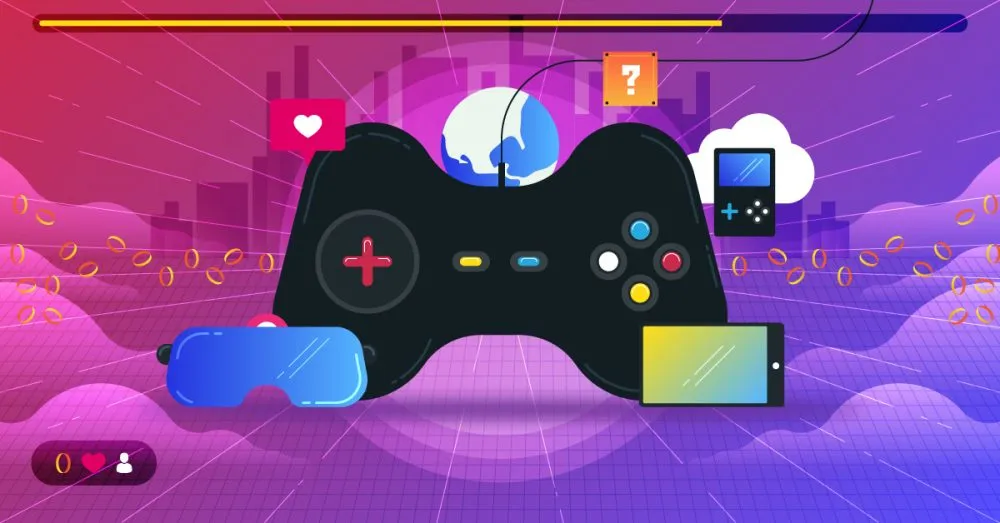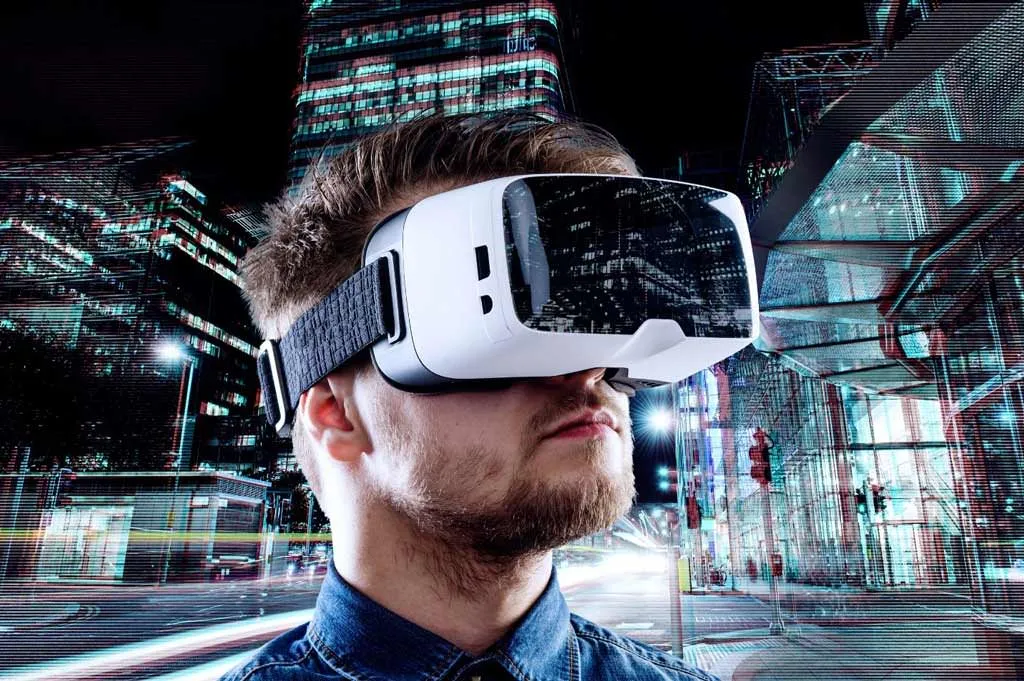Introduction to Gaming Technology
The gaming world is undergoing a remarkable transformation, and it’s all thanks to cutting-edge technology. Gamers today are experiencing immersive adventures like never before. From the moment you put on a VR headset to stepping into an augmented reality playground, it feels as if the boundaries between digital and real life have blurred.
As we delve deeper into this gaming revolution, we’ll explore how innovations are reshaping our play experiences in exciting ways. Buckle up; whether you’re a casual player or a hardcore enthusiast, what lies ahead will redefine your understanding of entertainment!
Virtual Reality (VR) Gaming
Virtual Reality (VR) gaming has ushered in an era of immersive experiences. Gamers can step into fantastical worlds that blur the lines between reality and imagination. With VR headsets, players find themselves surrounded by breathtaking graphics and lifelike environments.
The technology allows for a multi-sensory experience. Players don’t just see the action; they hear it, feel it, and even interact with their surroundings. This level of immersion creates emotional connections to characters and stories like never before.
Popular titles offer everything from heart-pounding adventures to relaxed exploration. Each game invites users to engage in gameplay that feels personal and unique.
As hardware continues to evolve, we can expect more sophisticated interactions. The potential for social gaming in VR also opens doors for shared experiences across vast distances.
Augmented Reality (AR) Gaming
Augmented Reality (AR) gaming is reshaping how we interact with our surroundings. It overlays digital elements onto the real world, creating a seamless blend of both realms.
Imagine stepping outside and seeing Pokémon popping up in your backyard or battling zombies on your street. Games like Pokémon GO have shown us just how captivating this experience can be. Players are no longer confined to screens; they explore their neighborhoods while engaging in epic quests.
The technology behind AR has advanced significantly. With improved smartphones and wearable devices, these games are more immersive than ever before. Developers continue to push boundaries, enhancing graphics and interactivity.
Social interactions also thrive in AR gaming. Friends can collaborate or compete right where they stand, making each game session an adventure filled with laughter and excitement. The potential for storytelling within this format opens new avenues for creativity and gameplay dynamics too.

Cloud Gaming
Cloud gaming is reshaping how we play. With this technology, gamers can stream titles directly from servers without needing high-end hardware. This opens up a world of possibilities.
Imagine accessing your favorite games on any device – be it a smartphone, tablet, or smart TV. You no longer need to invest in expensive consoles or upgrades to enjoy the latest releases.
Latency has improved significantly too. As internet speeds rise and technologies evolve, players experience less lag time and smoother gameplay.
The convenience factor cannot be ignored either. No downloads are required; just jump into action instantly with cloud-based platforms like NVIDIA GeForce NOW and Google Stadia.
As more companies embrace this model, the barriers between casual and hardcore gaming continue to dissolve. It’s an exciting era where everyone can participate in the gaming revolution effortlessly.
The Impact of Artificial Intelligence (AI) on Gaming
Artificial Intelligence is revolutionizing gaming in ways we never imagined. Game developers are harnessing AI to create more dynamic and immersive experiences.
NPCs (non-player characters) have evolved significantly, displaying realistic behaviors and emotions. Players feel a deeper connection as these characters react intelligently to their actions.
AI-driven algorithms also enhance gameplay by adjusting difficulty levels in real-time. This keeps players engaged without overwhelming them or causing frustration.
Moreover, procedural content generation allows for endless worlds and scenarios tailored to individual play styles. Each session can be uniquely different, making every adventure fresh.
Additionally, AI plays a crucial role in analyzing player data. Developers gain insights into preferences and habits, leading to more personalized gaming experiences that resonate with diverse audiences.
The potential of AI continues to grow as technology advances. Gamers can look forward to increasingly rich narratives and smarter systems that adapt seamlessly over time.
The Rise of Mobile Gaming
The rise of mobile gaming has transformed the landscape of entertainment. With smartphones in nearly every pocket, players can dive into immersive worlds anytime and anywhere.
Accessibility is a key factor driving this trend. Developers have created games that cater to casual gamers as well as hardcore enthusiasts, broadening the audience significantly. Popular titles often feature simple mechanics but deliver engaging experiences.
Social connectivity also plays a role. Many mobile games offer multiplayer options, allowing friends to join forces or compete against each other seamlessly through their devices.
Advancements in technology further enhance gameplay quality on mobile platforms. Improved graphics and processing power make even complex titles enjoyable on smaller screens.
With regular updates and seasonal events, developers keep content fresh, ensuring players remain hooked long after they first download an app. The future looks bright for mobile gaming as it continues to evolve at a rapid pace.
Future Possibilities and Innovations in Gaming Technology
The future of gaming technology is brimming with potential. As we look ahead, the blending of virtual and physical realms could redefine our play experiences. Imagine fully immersive worlds where every detail responds to your actions.
Advancements in haptic feedback might allow players to feel textures and movements, adding a new layer to gameplay. This tactile experience can transform how we interact with virtual environments.

Moreover, developments in neural interfaces may lead us closer to controlling games through thought alone. Picture playing without a controller—just pure concentration guiding your character’s moves.
AI-driven narratives will create personalized storylines that adapt based on individual choices and emotions, making each session unique.
As cloud gaming continues its rise, accessibility increases for gamers everywhere—no high-end console required. Everyone can join this revolution regardless of hardware limitations.
Innovation is relentless; the possibilities are endless as technology evolves at breakneck speed!
Frequently Asked Questions
The gaming revolution is shaping the future of play, and many enthusiasts have questions about these advancements. Here are some common queries regarding the evolving landscape of gaming technology.
What is Virtual Reality (VR) gaming?
Virtual reality gaming immerses players in a 3D environment through headsets like Oculus Rift or HTC Vive. Users can interact with their surroundings, enhancing engagement and creating lifelike experiences.
How does Augmented Reality (AR) differ from VR?
While VR creates an entirely virtual space, AR overlays digital elements onto the real world. Games like Pokémon GO exemplify this by blending gameplay with actual environments.
What is cloud gaming?
Cloud gaming allows players to stream games directly from servers rather than downloading them on local devices. This enables access to high-quality games on various devices without needing powerful hardware.
How does AI enhance my gaming experience?
Artificial intelligence plays a crucial role in game development by improving NPC behavior and personalizing player interactions. It can adapt challenges based on skill levels, making each session unique for users.
Why has mobile gaming become so popular?
Mobile gaming offers convenience and accessibility. With smartphones ubiquitous today, players can enjoy games anytime, anywhere—leading to a surge in casual gamers seeking quick entertainment options.
What innovations should we expect in future gaming technologies?
Future possibilities include advanced haptic feedback systems that simulate physical sensations during gameplay and deeper integrations of AI for more immersive storytelling experiences. Furthermore, developments like brain-computer interfaces could redefine how we interact with games altogether.
As technology continues its rapid evolution, it’s clear that the way we play will keep transforming alongside it—ensuring excitement for both new and seasoned gamers alike!










